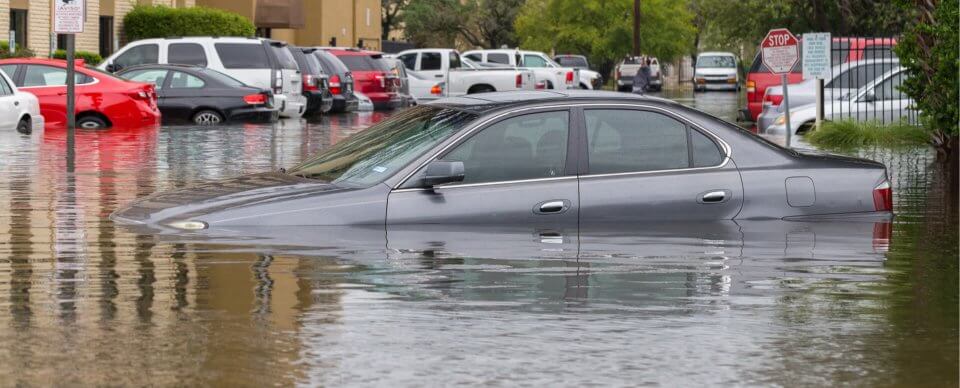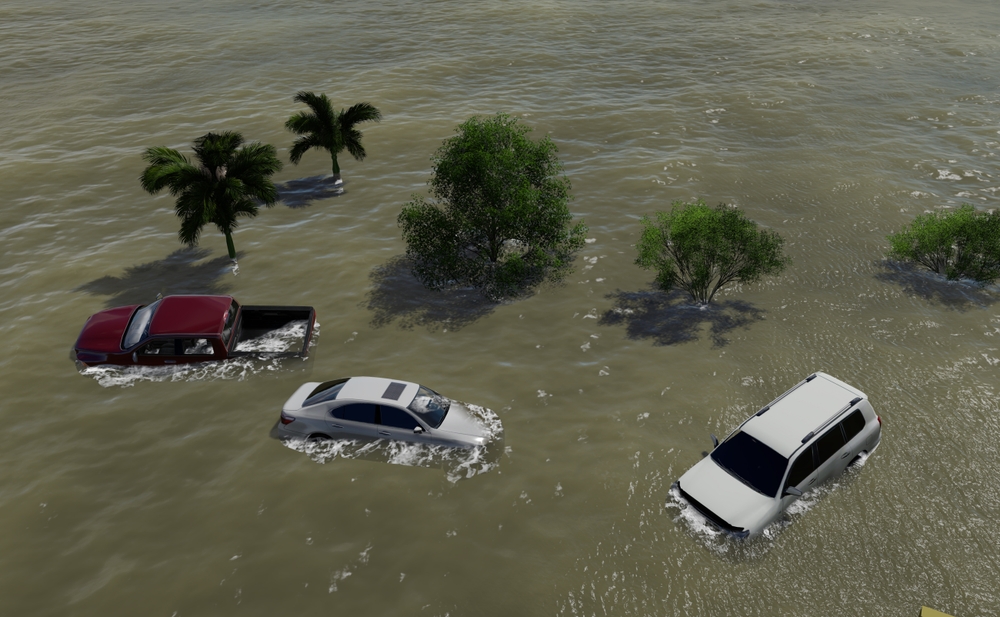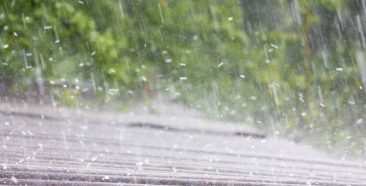
Maybe. In certain cases, and depending on the extent of damage to your vehicle from flood waters, some auto insurance companies may opt to pay the cost of repairs instead of declaring it a total loss. Unfortunately, this can present a slew of future problems down the road.
In most cases, however, a swamped car will be declared totaled. The damage water does to automobiles, especially with today’s computer-driven components, is just too much to repair. You may have a deep connection to your car – after all, many of us spend more time in the car than we do in our home. However, the major headache that an owner may face down the road after their car has been submerged are generally very expensive to fix.
If My Flooded Car is Totaled, Am I Covered?
With all the talk of climate change and other potential storms bringing rain and flooding, if your car ends up under water – are you covered? Well, possibly. A lot depends on your auto insurance policy and how long ago you purchased the coverage prior to your ride getting damaged or submerged.
Floodwaters, whether caused by heavy rains or a river overflowing its banks, can severely damage a car in a hurry. But, the good news is – if you purchased comprehensive coverage ahead of your loss, you should be in good shape. Your insurer will, in all likelihood, honor your claim.
An exception might be if a hurricane is about to pound the coastal and inland areas and you decide at the last minute to rush out and get comprehensive auto insurance added to your policy. Be aware that most carriers are wise to the practice of people wanting to pay for the coverage for only a few days rather than the full year in order to file an insurance claim for water damage or complete loss.
That’s why the purchase of comprehensive coverage is restricted for areas in the hurricane’s path. Therefore, to avoid having your claim denied – it’s a good idea to buy the coverage ahead of time and keep it for the entire year. Don’t dump it once the threat has passed.
What is Comprehensive Coverage?
It’s the sidekick of collision. Most people who have comprehensive coverage do so because they’ve purchased what is known as full coverage, either by choice for the extra protection or because their loan company required them to do so. Full coverage consists of comprehensive and collision, plus the state-mandated liability.
Comprehensive helps owners pay for damages typically caused by acts out of your control, such as storms, falling tree branches, flooding, hail and theft. It won’t pay anything for damages in the event of an accident with another car or stationary object, such as a telephone pole. However, strangely, it will pay for damages caused by a collision with an animal, such as a deer.
Insurers like to sell collision and comprehensive as part of a package, but you can purchase it alone.
What Does Comprehensive Cost?
The annual average cost for comprehensive is $160, which works out to about $13 per month. Pretty cheap when you consider it will help you get a new car if yours is flooded and totaled. In that case, your insurer should pay you the car’s actual cash value, minus your deductible.
Who Needs Comprehensive?
Unless your car is not worth your annual premium, almost everybody will benefit from the added protection of comprehensive. If you’ve got a new vehicle, even if it is already paid for, you may need this type of insurance for the extra protection it offers. Classic car enthusiasts will want to have as much protection as possible for a vintage showboat they’ve expended lots of time and money restoring. If you drive for a living and have commercial insurance, it’s a good idea to buy the same type of extended protection as regular auto coverage provides, but you’ve got a more pressing need to have the best coverage since you make your living with your wheels.
What Should I Do If My Car is Sitting in Water?
Experts advise that if your car has been submerged or covered in water, it’s best to not try to start it. You don’t know what has been damaged while your engine and electrical components system were under water, so it’s best not to take chances with your safety. The first thing you should do is call your insurance agent and start your claim. They should tow your car to their contracted facility to determine if its salvageable or not.
Once your vehicle is the victim of a major flood damage and submerged for any period of time, the engine, transmission, electrical components and other vital mechanical parts will be damaged. And, while it isn’t common practice, if your car insurance company insists on repairing the water damage, you will likely have to use your insurer’s preferred body shop. The reason for this is that the work is usually discounted for volume, plus it’s guaranteed. So, if your truck or car turns into a nightmare, the mechanic repairs are on the carrier and not out of your pocket.
What Factors Make Your Flood-Damaged Car a Total Loss?
While the declaration of a complete loss is entirely up to your insurer, in general, these factors will determine its future:
- Damage so extensive it can’t be repaired safely.
- Costs to repair surpass its worth.
- If the damage or the cost to repair is determined to be too much, according to state regulations or your carrier’s guidelines.
Some states, such as South Carolina, use what’s known as a Total Loss Threshold (TLT), which is mandated by law, to dictate the damage ratio needed to declare somebody’s car a complete loss.
For example, if your vehicle has a value of $20,000 and the damage is estimated at $15,000 – using South Carolina’s TLT ratio of 75 percent – your vehicle would be considered lost.
But, keep in mind that none of this matters if you don’t have comprehensive coverage on your vehicle. Make sure you’ve got all the coverage you need by comparing rates.

Can I Clean My Own Flooded Car?
It’s probably best to leave any cleanup to a professional, if possible. Many people don’t understand that floodwaters are filled with nasty stuff like raw sewage and contaminants that can cause serious health issues. The risk of mold in the car is always present
Unless you are a mechanic, you should never dive deep into your engine for any reason. Only a professional mechanic can get inside your engine safely and see the extent of the damage. Today’s electronics are computer-driven, so it takes specialized equipment to read and repair these parts.
Parts of your vehicle that may have severe damage include the headlights, the air conditioning system, sensors, mechanical components, door panels, power locks and power windows, seats and windshield wipers. There are other areas that may receive potential damage and some of it depends on the type of water – whether it was under salt water or in a freshwater flood.
How to File a Claim if Your Vehicle Gets Flooded
Here is some good advice whenever something happens that may result in you filing a claim with your insurer: Take pictures. If you can safely do so, the first thing you need to do is take plenty of pictures of your car’s interior and exterior. Now that everybody has a cell phone with a camera, there’s no excuse not to take plenty of pictures documenting whatever has happened to your flooded car.
If you are located in an area where there’s been a natural disaster, bring your patience with you. There will be plenty of people filing claims and insurers and their claims people will be busily trying to get to you. If there is a disaster, your car insurance company may have a temporary disaster response center or station set up. You can find this out by calling them.
Once you have filed your insurance claim, make sure you get a claim number and the name and phone number of the adjuster. You’ll want to get an estimate on how long it will be before your claim will be settled. Find out if your policy allows for rental car reimbursement.
Beware of Salvaged Flood-Damaged Vehicles
Unfortunately, even vehicles that look and sound fine when you test drive them may have deep-seated issues if they are a salvaged flood-damaged car. In more than a few cases, insurers may declare a flood-damaged vehicle a complete loss and sell it to junkyards or vehicle rebuilders. The salvage title should be plainly marked with the words “salvage” or “flood”, however in some states, this may appear on the salvage title as some obscure letter or number code.
Those who buy these at an auction may resell them legally to you if the damage is properly noted on the salvage title. Although they should get a “rebuilt title” until after repairs and a reinspection, some watchdog groups have found floodwater cars on the market with a clean title. These shady operators may sometimes be able to do some “title washing” in states with lax regulations. Those looking to purchase a used car can run a background check through the National Motor Vehicle Title Information System, which can give a vehicle’s history.
Another thing to be wary of is a used car being offered with a “lost” title or only a bill of sale. Unfortunately, nothing is set in concrete as far as proof positive that a vehicle has been underwater, literally. It’s recommended that consumers get a detailed inspection to look for signs of water damage prior to buying.
Find the Cheapest Comprehensive Insurance Online Today
Whether you have a flood-damaged car or not, having the right kind of protection can get you back on the road quickly when necessary. At Freeway, we can find affordable car insurance options that meet your needs. Get a free quote online or call (800) 777-5620 today to speak with a live insurance agent.



